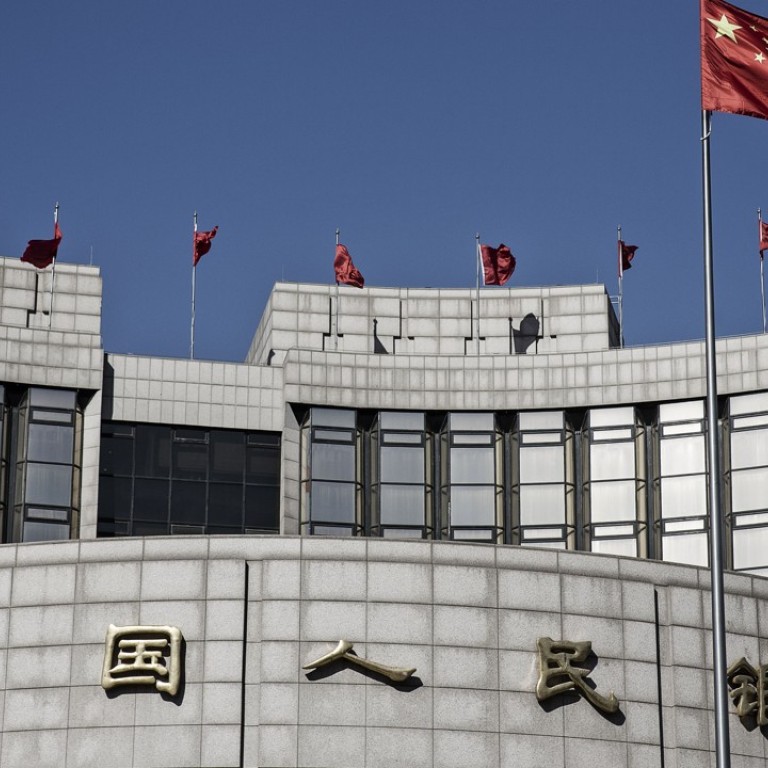
China’s central bank cuts reserve requirement ratio to spur lending
But the People’s Bank of China says it will maintain prudent monetary policy
China’s central bank on Saturday cut the amount of cash some banks must hold against loans from next year as it tries to boost lending to small businesses and the agricultural sector.
But the People’s Bank of China said it would maintain its prudent monetary policy to facilitate its deleveraging campaign and tackle risk.
The reserve requirement ratio (RRR) will be cut a further 50 basis points to 150 basis points from the benchmark RRR rate for banks that meet certain requirements for lending to the targeted sectors, the central bank said on Saturday.
“The targeted ratio cut is an incentive mechanism to allocate more financial resources to inclusive finance and optimise lending structure. It’s a structural policy,” the central bank said in a statement.
The move was flagged by the State Council on Wednesday. The ratio cut – the first since February 2016 – will give commercial banks billions more yuan to lend small companies at a lower cost and was part of a raft of measures China’s cabinet said were aimed at encouraging support for small businesses and creating new jobs and growth.
E Yongjian, an analyst with the Bank of Communications, noted that the central bank had extended support not just to small businesses and agriculture, but to poverty reduction projects, start-ups and student loans. “Future monetary policy could be implemented in a more targeted and structurally adjusted manner,” he added.
China tries to boost support for small businesses through taxes, loans
Some economists see the targeted ratio cut as the start of a looser monetary policy given the country’s need to stimulate growth while keeping the economy stable.
Deng Haiqing, chief economist with JZ Securities, said Beijing could be about to shift its policy focus towards stabilising the economy.
“We are seeing the monetary policy tightening that started in September 2016 drawing nearer to the end – or at least we will not see any further tightening,” Deng wrote in a research note on Thursday.
Debt accumulation has slowed since the Chinese leadership listed deleveraging as an economic priority in 2015 – but the overall debt level in the economy continues to rise.
It was also a key concern behind the decisions of rating agencies Moody’s Investors Service in May and S&P Global Ratings this month to downgrade China’s sovereign credit rating.
Beijing tries to win over entrepreneurs with praise and promises
The central bank has previously reduced the reserve requirement ratio to revive the slowing economy – it did so five times from February 2015. GDP growth slowed to a 25-year low of 6.9 per cent that year.
But “the authorities apparently don’t want this move to be misinterpreted as a signal of loosening”, said Zhao Yang, chief China economist at Nomura International, noting that the government was reluctant to make an across-the-board cut to the ratio.
That was seen in a report in Financial News, the central bank’s mouthpiece, on Friday. “A targeted cut to the reserve requirement ratio does not signal a turnaround in the current prudent and neutral monetary policy,” the report said. “This isn’t the start of a ‘loosening cycle’ or a situation where liquidity will be flooding into the system.”
But Zhao said there could be further reserve requirement ratio cuts down the track if producer price growth continued to slow and the property market cooled down.
Ding Shuang, chief China economist with Standard Chartered Bank, said it was unlikely Beijing would loosen monetary policy in the short term since deleveraging had been a top priority on the government agenda this year. He added that it was also unnecessary since full-year GDP growth was expected to be above the target of 6.5 per cent.

